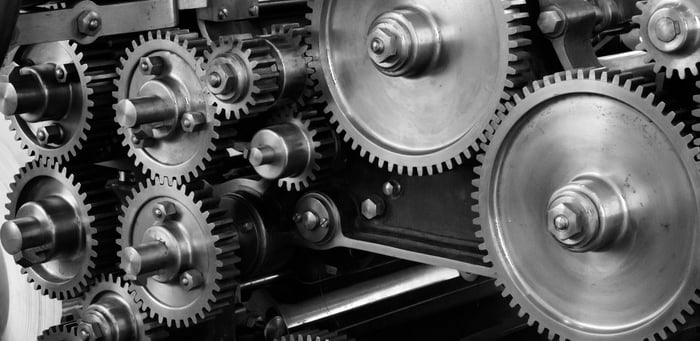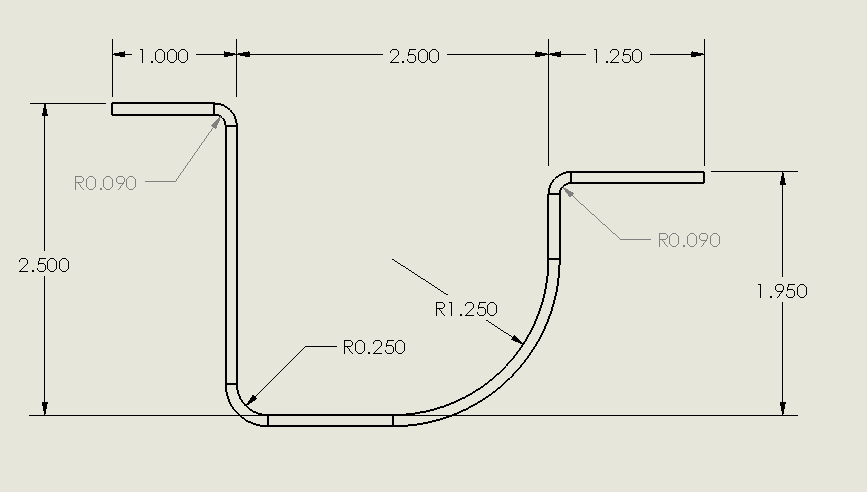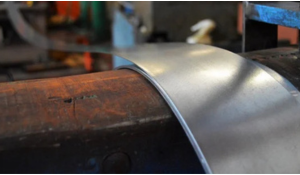Beyond Costs: Roll Forming Advantages & Value

You need a metal forming process that will produce a quality product at the right price, meet your inventory needs, and ensure your product is delivered on time.
Enter roll forming.
Working with a company that optimizes every step of the roll-forming method, you cut costs in ways that aren’t directly related to the per-part cost. So, what are the TOTAL cost savings created by a comprehensive supply system and the inherent roll forming advantages?
The 'Other' Advantages of Roll Forming
Many of the perks of cold roll forming aren’t found in other metal forming processes. Certainly, not all of them have the same package.
The true value of metal roll forming comes in these forms, and they all eventually tie back into cost:
- Inventory management
- Quarterly reviews
- Quality systems
- Safety
- Cross-trained workforce
(Related page: Why roll forming?)
1. Inventory Management
We’ve found that the most cost-effective style of inventory management is one of Kanban-based trigger-response. You give us the trigger information directly from the point of use (ideally from the people using the parts), and we respond based on our replenishment system design.
This management style works for both raw materials on our roll-forming production line as well as your finished product inventories.
Product Inventories
The cycle starts with an estimation of yearly consumption (which gets more precise and seasonal the longer we manage your stuff) divided by an economic order run quantity. That helps your company figure out how many “bundles” should be in your system. Then, we ship and track amounts of those bundles depending on trigger points indicated by you, the client.
Here’s a scenario to illustrate:
You consume 1,000 roll-formed products a year, and we run the pieces four times per year -- so, each run produces 250 pieces. We organize the pieces into bundles of 50 pieces each, which means there are always five bundles in the system.
We ship you three bundles to start. (Shipping only a portion of the product at a time helps you keep inventory at a minimum, and assists us in our tracking and distribution of the product.) Every week, we will get a simple report from the department using the parts that shows how many unopened bundles you have left in your inventory. For the first two weeks or so, that number is 2. As soon as you indicate you have only one unopened bundle left, that’s our trigger. We immediately release two more bundles so you have three again.
If for some reason you indicate that your inventory is dwindling more quickly than usual, or you’re not using as much as expected, we can adjust our output to meet your needs.
This point-of-use feedback system is the most accurate way to manage inventory. Other systems, like ERP, computer systems, and barcodes, are all viable -- however, we’ve found there’s too much room for human error or system failures. The trigger-response system is as close to foolproof as you can get for roll-forming applications.
Problems With Other Systems
With an ERP system, you might have a note that says you will use no more than three pieces of material for each unit manufactured. This sounds perfect in theory, but human error quickly gets in the way. People drop, scratch, and otherwise damage items all the time - and those instances often go unreported due to forgetfulness or fear of repercussions. So, more inventory is being used up without any documentation.
In these situations, it’s very common for the manufacturer’s personnel to go to a shelf in search of an item, only to find the inventory has been emptied. This misunderstanding of true consumption is an unnecessary waste of time and reliability for suppliers and customers alike.
It doesn’t matter if personnel use a little more (or less) than expected, with the trigger-response system. The only thing that matters for the consumption-replenishment cycle is how many unopened bundles are left on the shelf.

Raw Material Inventories
On our end, we use the same system of triggers and responses to make sure our coil inventories are correct. Wide master coils are slit into smaller run coils; when we hit the run coil trigger at our steel supplier's warehouse, we order another master.
This system allows us to be more flexible when buying materials for clients. We don’t hoard inventory, so we can quickly change gears if a client no longer needs a certain product. We can stay close to market pricing as well, rather than gambling with your raw material dollars.
2. Quarterly Reviews
To make sure you’re getting the most out of our supply system, we sit down with you and discuss the results. Quarterly reviews are frequent enough to catch issues as they crop up, and make small changes for the next review. We want to know if anything is changing!
In particular, we like to make sure the inventory levels are spot on. We track all feedback from clients and, once a year has gone by, we can optimize for your activity levels in each quarter.
Also, we like to collaborate with our clients to plan the next materials purchase. We discuss:
- How much we have in our inventory
- How much you need
- What the market looks like for your material
Because it's a joint purchase, you'll get exactly what you need for your specific roll forming processes.
Other agenda items include:
- Changes in estimated annual volume
- Pending design changes for your roll-formed parts
- Freight utilization
- Personnel changes
- Cost-saving ideas
3. Quality Systems
Dahlstrom Roll Form is ISO 9001:2015 certified, uninterrupted since 1995. This certification indicates that our quality management system meets a certain global standard. Pieces of the quality system include:
- On-time delivery percentage (99.5% in 2021)
- Field defect parts per million (3,827 in 2021 - four sigma level is 6,210)
Our customers enjoy the confidence that comes from quick delivery times and a low PPM defect rate. We pride ourselves on this repeatable quality and aim to protect our clients’ interests by continuously optimizing these processes.

4. Safety
Aside from being ISO certified for quality management, we’re also SHARP certified for our safety practices. SHARP stands for Safety and Health Acknowledgement and Recognition Program, and the certification is the highest recognition given by OSHA for exemplary safety practices.
By promoting safety for our employees, we also promote safety for our customers. Some of our safety precautions include:
- Weekly housekeeping & organization audits: Removing clutter and potential hazards from the workspace
- Monthly safety training: Bringing in a safety consultant to talk to the whole staff about general safety practices (lifting heavy things, hazardous chemicals, personal protective equipment, etc.)
We are audited by the Department of Labor regularly to maintain our SHARP certification.
5. Cross-Trained Workforce
Our personnel has a vested interest in the success of your product. All of our operators are paid by the acquisition of skill rather than tenure. The faster they learn and the better their skills, the more they get paid. They have every reason to put out the best quality parts for you.
This program includes cross-training for different roll forming machines and client jobs. If something were to happen to the primary employee who runs your product, there’s guaranteed to be another person who understands your tooling costs and part quality requirements.
That means your project will be on time, and you’ll have no unexpected delays on the roll form line or increased costs for idle time.
Benefits of a Comprehensive System
When you go with roll forming services that include all of these systems, you get:
- Reduced waste & optimized materials costs
- Involvement & complete transparency in the buying process and other processes
- Confidence in on-time delivery and part quality
- No wasted or idle manufacturing time
Not all of these translate directly into monetary savings, but they can be just as valuable. The knowledge that your metal forming partner is working to optimize all of your parts and processes is incredibly important.
LOOKING TO STREAMLINE YOUR ROLL-FORMING COSTS?
Roll forming can be one of the most efficient and cost-effective methods of metal shaping. Download this free guide to see how you can cut your roll-forming costs.
(Editor's note: This article was originally published in January 2016 and was recently updated.)
You May Also Like
These Related Stories

5 METAL ROLL FORMED PROFILES YOU CAN'T (OR SHOULDN'T) MAKE OTHER WAYS

6 Ways to Get More Out of Your OEM Metal Roll Forming Process




